
- Lean Philosophy

Eight Steps To Practical Problem Solving

The Toyota Way To Problem Solving
The art of problem solving is constantly trying to evolve and be re-branded by folks in various industries. While the new way might very well be an effective method in certain applications. A tried and true way of identifying and solving problems is the eight steps to practical problem solving developed by Toyota, years ago. The system is structured, but simple and practical enough to handle problems of the smallest nature, to the most complex issues.
Using a fundamental and strategic way to solve problems creates consistency within an organization. When you base your results off facts, experience and common sense, the results form in a rational and sustainable way.

The Eight Step Problem Solving Process
- Clarify the Problem
- Breakdown the Problem
- Set the Target
- Analyze the Root Cause
- Develop Countermeasures
- Implement Countermeasures
- Monitor Results and Process
- Standardize and Share Success
The eight steps to practical problem solving also include the Plan, Do, Check and Act (PDCA) cycle. Steps one through five are the planning process. The doing is found in step six. Step seven is the checking . Step eight involves acting out the results of the new standard.
This practical problem solving can be powerful tool to issues facing your organization. It allows organizations to have a common understanding of what defines a problem and what steps are going to be taken in order to overcome the problem efficiently.
The Eight Steps Broken Down:
Step 1: clarify the problem.
A problem can be defined in one of three ways. The first being, anything that is a deviation from the standard. The second could be the gap between the actual condition and the desired condition. With the third being an unfilled customer need.
In order to best clarify the problem, you have to see the problem with your own eyes. This gives you the details and hands-on experience that will allow you to move forward in the process.
Step 2: Breakdown the Problem
Once you’ve seen the problem first hand, you can begin to breakdown the problem into more detailed and specific problems. Remember, as you breakdown your problem you still need to see the smaller, individual problems with your own eyes. This is also a good time to study and analyze the different inputs and outputs of the process so that you can effectively prioritize your efforts. It is much more effective to manage and solve a bunch of micro-problems one at a time, rather than try and tackle a big problem with no direction.
Step 3: Set the Target

Step three is all about commitment and focus. Your attention should now turn towards focusing on what is needed to complete the project and how long it will take to finish. You should set targets that are challenging, but within limits and don’t put a strain on the organization that would hinder the improvement process.
Step 4: Analyze the Root Cause
This is a vital step when problem solving, because it will help you identify the actual factors that caused the issue in the first place. More often than not, there are multiple root causes to analyze. Make sure you are considering all potential root causes and addressing them properly. A proper root cause analysis, again involves you actually going to the cause itself instead of simply relying on reports.
Step 5: Develop Countermeasures
Once you’ve established your root causes, you can use that information to develop the countermeasures needed to remove the root causes. Your team should develop as many countermeasures needed to directly address any and all root causes. Once you’ve developed your countermeasures, you can begin to narrow them down to the most practical and effective based off your target.
Step 6: Implement Countermeasures
Now that you have developed your countermeasures and narrowed them down, it is time to see them through in a timely manner. Communication is extremely important in step six. You’ll want to seek ideas from the team and continue to work back through the PDCA cycle to ensure nothing is being missed along the way. Consider implementing one countermeasure at a time to monitor the effectiveness of each.
You will certainly make mistakes in throughout your problem solving processes, but your persistence is key, especially in step six.
Step 7: Monitor Results and Process
As mistakes happen and countermeasures fail, you need a system in place to review and modify them to get the intended result. You can also determine if the intended outcome was the result of the action of the countermeasure, or was it just a fluke? There is always room for improvement in the problem solving process, but you need to be able to recognize it when it comes to your attention.
Step 8: Standardize and Share Success
Now that you’ve encountered success along your problem solving path, it is time to set the new processes as the new standard within the organization and share them throughout the organization. It is also a good time to reflect on what you’ve learned and address any possible unresolved issues or troubles you have along the way. Ignoring unresolved issues will only lead to more problems down the road.
Finally, because you are a true Lean organization who believes continuous improvement never stops, it is time to tackle the next problem. Start the problem solving process over again and continue to work towards perfection.
Additional Resources
- 8D for Problem Solving – creativesafetysupply.com
- Training to Use 8D Problem-Solving Tactics – blog.creativesafetysupply.com
- The Great Root Cause Problem Solving Debate – realsafety.org
- Design Thinking: Empathy and Iteration for Innovation and Problem-Solving – creativesafetypublishing.com
- 10 Commandments to Continuous Improvement – lean-news.com
- Lean Manufacturing Implementation – The First 5 Steps – iecieeechallenge.org
- “No Problem” is a Problem – jakegoeslean.com
- The Transitional Steps Involved In The 5s Principles During Implementation – 5snews.com
- The Tools of Kaizen – blog.5stoday.com
Related posts:
- 3P and Lean
- The Vacation Paradox
- Why Single Minute Exchange of Die (SMED)?
- Total Quality Management And Kaizen Principles In Lean Management
- An Engaged Employee is a Productive Employee
- Jim Womack’s Top Misconceptions of the Lean Movement
- Muda, Mura, and Muri: The Three Wastes
- Find a Dealer
- MyToyota Login
- Parts & Services
- Resource Library
About Toyota
Electric forklifts.

Electric Pallet Jacks
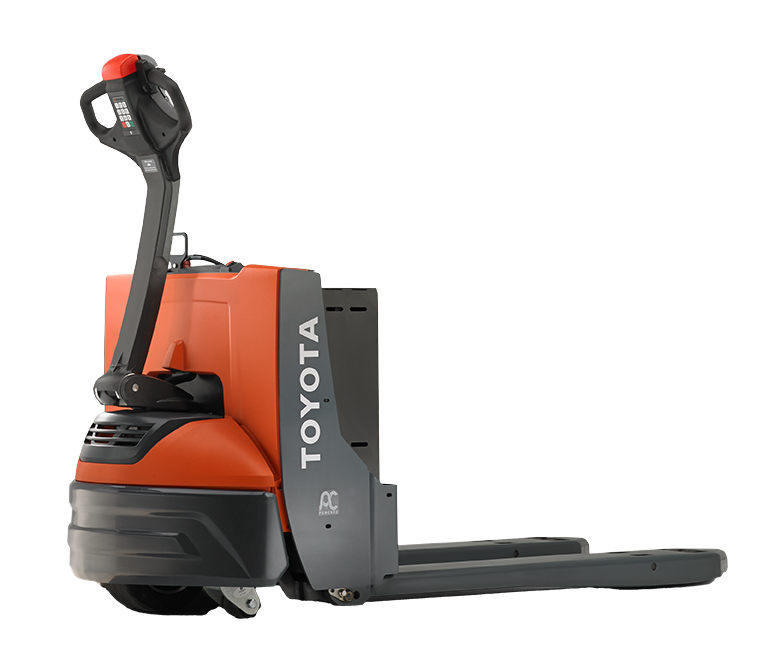
Electric Pallet Stackers
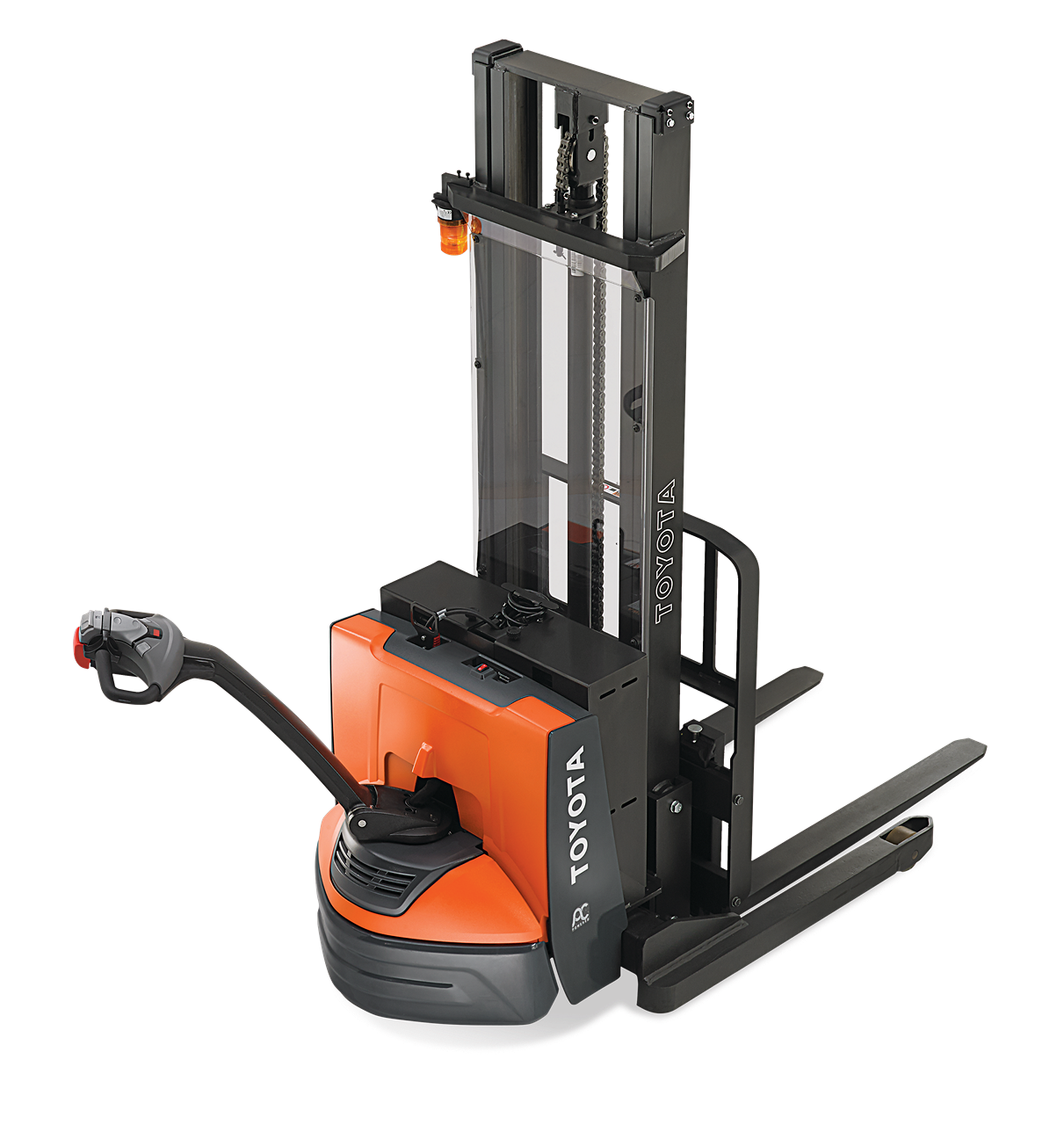
Reach Trucks

Order Pickers
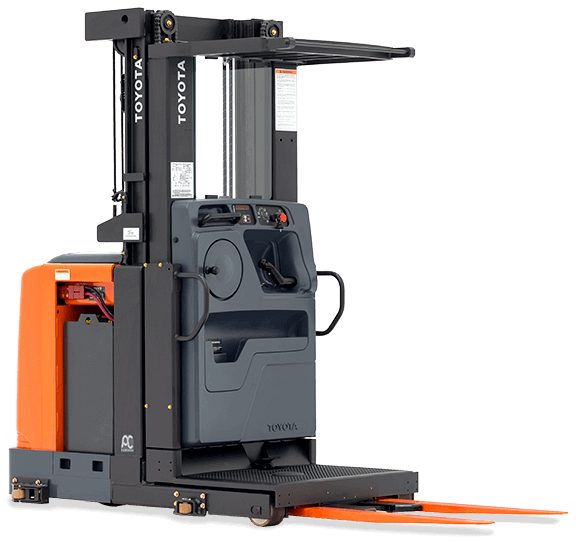
Internal Combustion: Cushion Tires
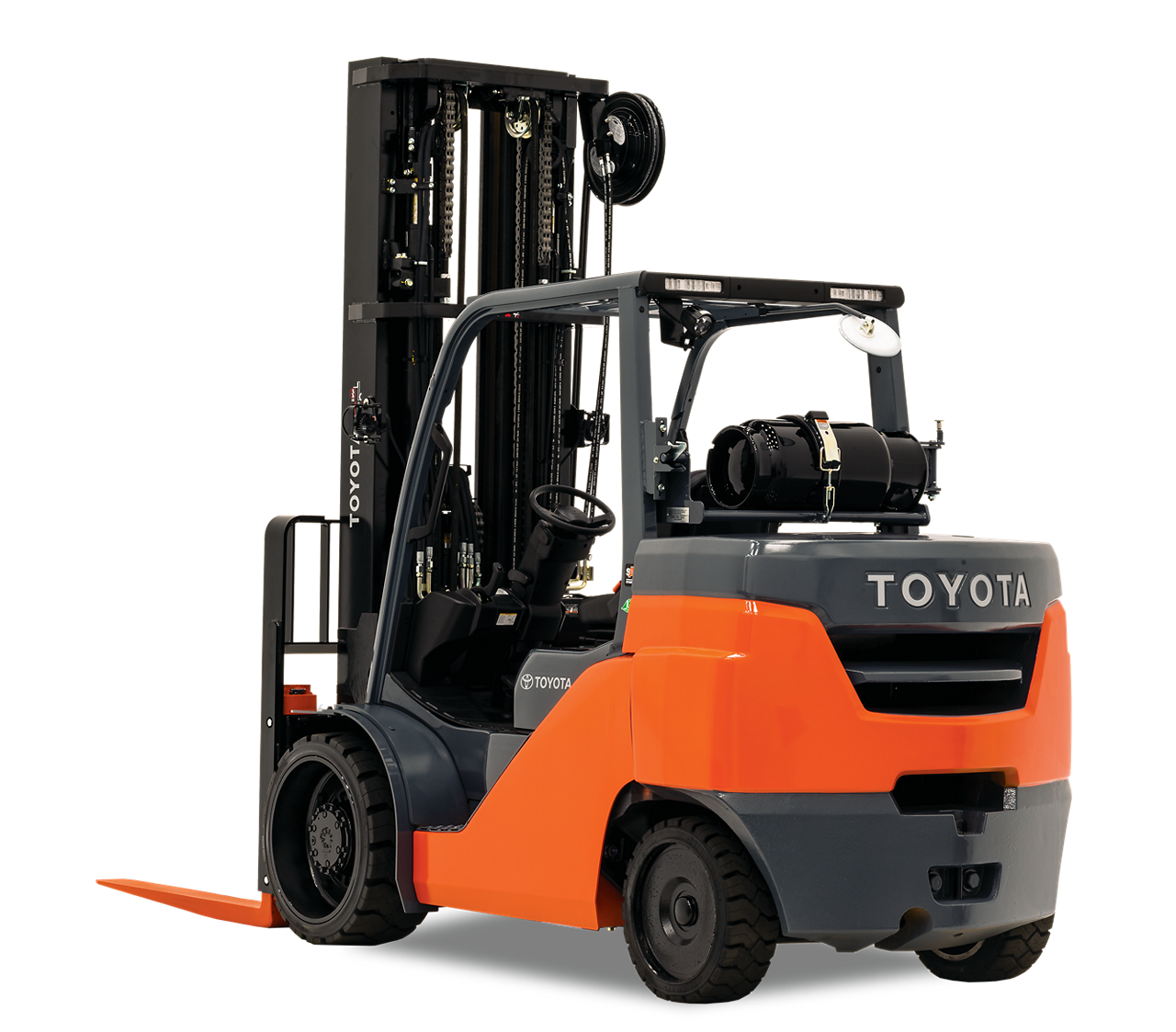
Internal Combustion: Pneumatic Tires

Heavy Duty Forklifts

Tow Tractors & Tuggers
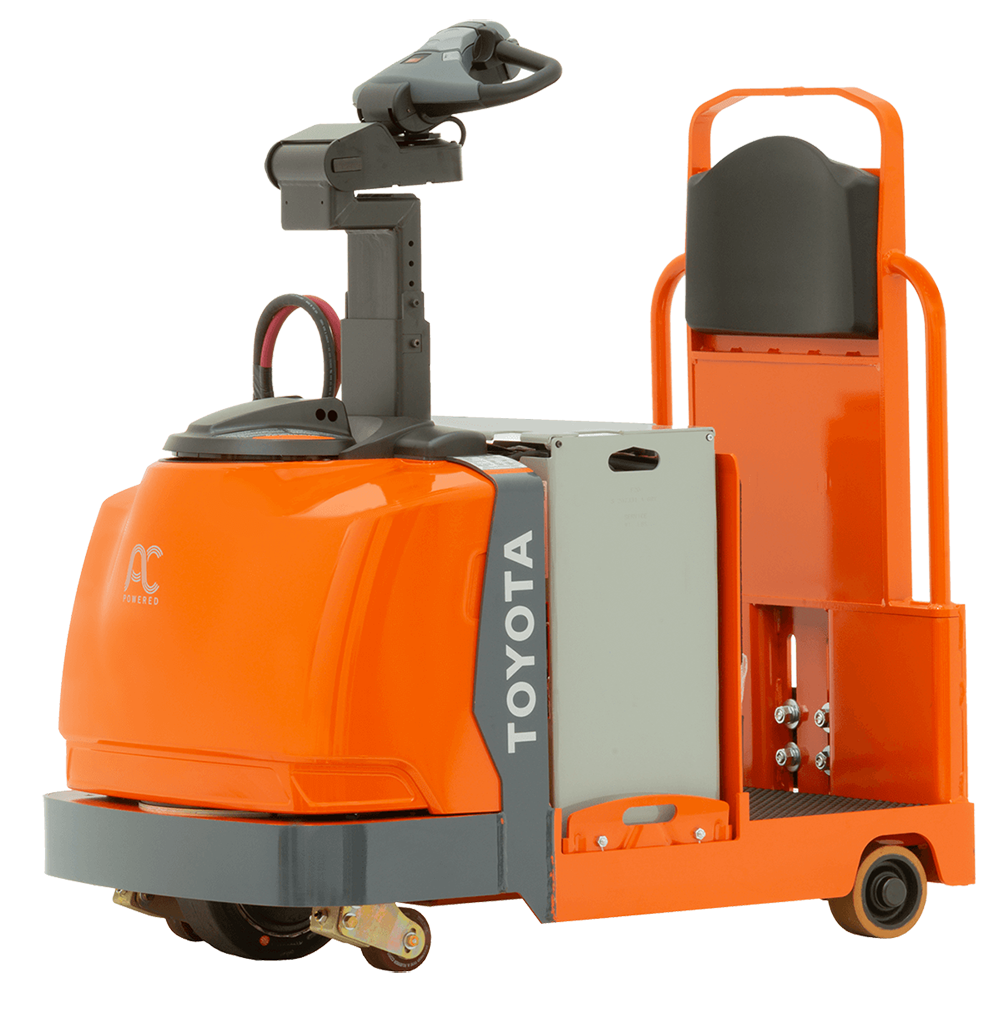
Hand Pallet Jacks
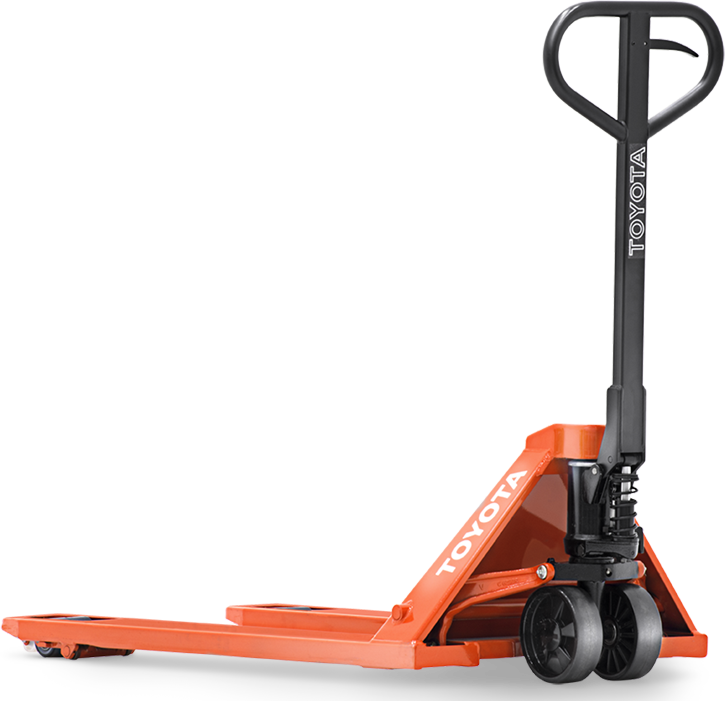
Automated Guided Vehicles
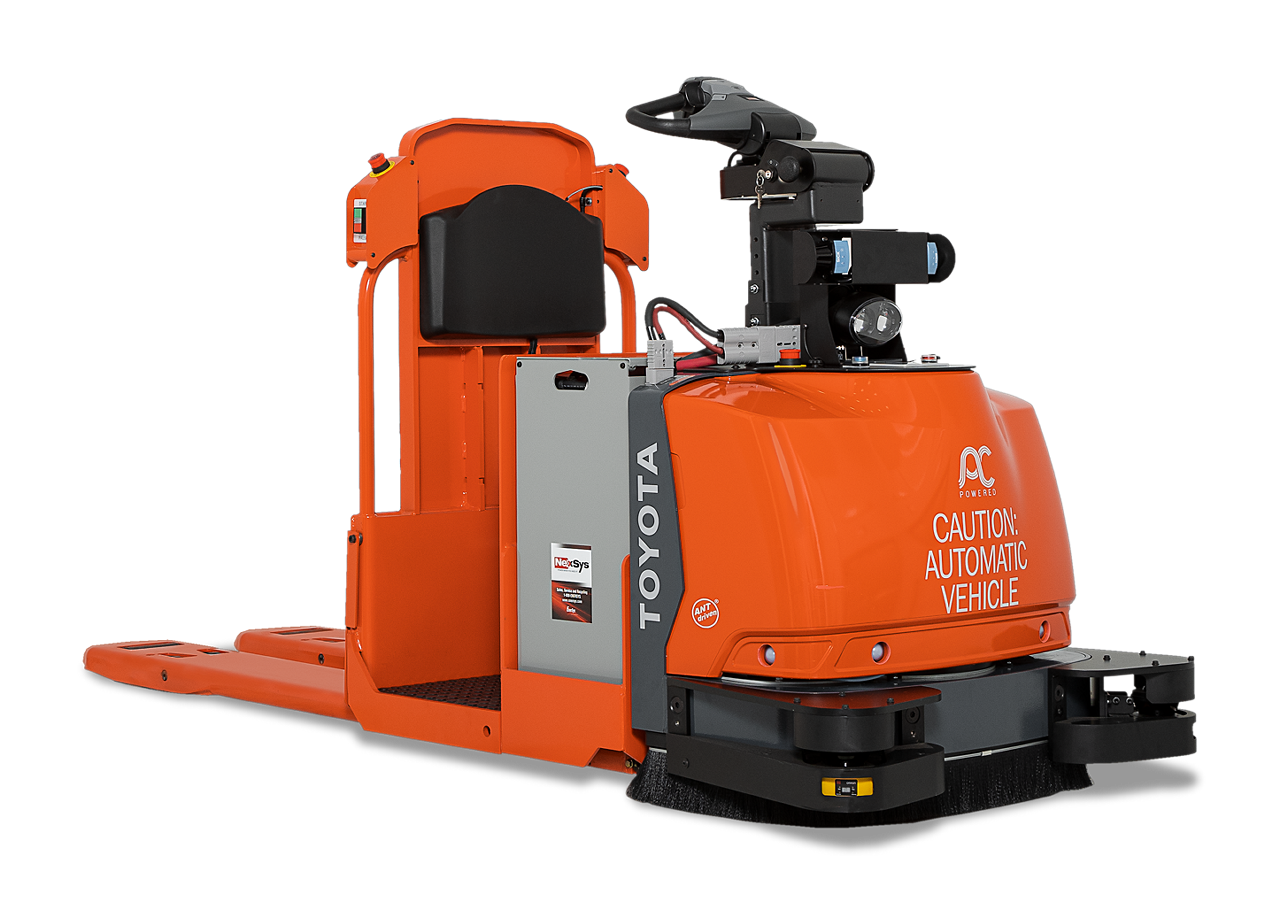
Aerial Work Platforms

- Toyota Assist
- Smart Environment Sensor
- Rental & Used
- Find a Forklift
- Compare Forklifts
- Industry Solutions
- Automation Solutions
- Energy Solutions
- Consulting Solutions
- Financial Solutions
- Fleet Solutions
Food Storage
General Warehouse
Cold Storage
General Manufacturing
Building Materials
Automate Receiving Processes
Automate Material Transportation
Automate Storage Systems
Automate Picking Solutions
Automate Shipping Systems
Become a Greener Business
Lithium-Ion Batteries
Convert from IC to Electric
Analyze Warehouse Space
Increase Employee Education
Improve Operation Safety
Improve a Process
Toyota Commercial Finance
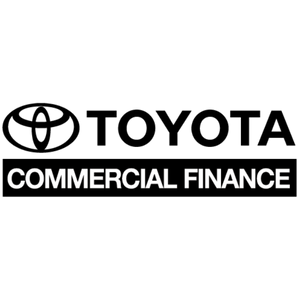
Financing with Toyota
MyToyota Credit Card
Benefits of Buying Toyota
Highest Quality Parts
Toyota forklift dealers are a one-stop-shop, full service forklift solutions provider.
- Model & Serial Number
- Part Number
How to Find Your Equipment Model Number
Finding the right parts for your equipment is easy when you have your model and serial number which can be found on the data plate. Luckily, a forklift data plate is installed on every truck on the market to help you understand what your forklift can do and provide vital information.
Model Number: The model number of your toyota forklift is extremely important for relaying information to your dealers about repair or technical assistance and for looking up replacements part!
Serial Number: The serial number on your lift is the most important number.The model serial number combination will allow us to provide you with the parts that will fit your particular piece of equipment.
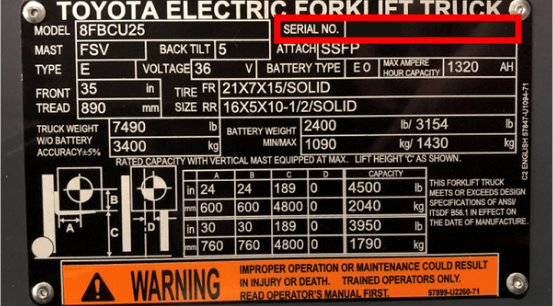
How to Find Your Equipment Serial Number
Model Number: The model number of your toyota forklift is extremely important for relaying information to your dealers about repair or technical assistance and for looking up replacements part!
Serial Number: The serial number on your lift is the most important number.The model serial number combination will allow us to provide you with the parts that will fit your particular piece of equipment.

Need some help? For further assistance or more information, contact your local Toyota Dealer .
- Request a Parts Quote
- Toyota Genuine Parts
- Toyota Starlift Parts
Industry Leading Service
Increase your productivity, overall up-time and lifespan of your forklift.
- Request Service Quote
- Maintenance Plans
- 360 Support
- All Resources
- Customer Stories
- Whitepapers
- Management Guides
- Video Library
Toyota Careers
Management Team
Toyota Dealers
Sustainability
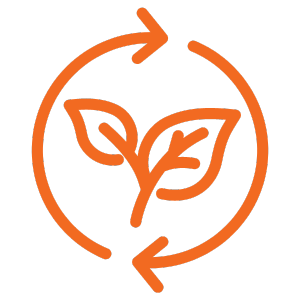
Corporate Social Responsiblity
- National Accounts
- Toyota Production System
- Forklift Safety
- Toyota Powered Engines
Press Enter to Search

Problem Solving Through Toyota Lean Management

Albert Einstein once wrote, “We cannot solve our problems with the same thinking we used when we created them.” Simply put, coming up with creative and innovative solutions to problems oftentimes requires you to look at the problem with a fresh perspective. As we’ve discussed in previous Toyota Lean Management blog posts , recognizing and cutting down on waste is critical to increasing your efficiency, reducing costs, and improving throughput. However, in order to make these improvements and see positive changes in ROI, a key step is recognizing where problems exist and working to solve them.
To recognize and solve these problems, it is often helpful to view them with a different lens to reach a newfound conclusion. Toyota’s 8 steps for problem-solving act as the lens that allows you to view different aspects of your operation from a new perspective.
Consider these eight steps as you start on the path to continuous improvement.
1. Clarify the problem
The first step in solving a problem is realizing that one exists. You can define a problem by asking yourself the following questions:
- Does my current process deviate from the standard?
- Is there a gap in my current process with what I am trying to accomplish vs. what I am accomplishing?
- Are my customer’s needs being met with my current process?
If the answer to any of these questions is no, then you know you have a problem that could use some improvement.
2. Break down the problem
Now that you’ve verified the problem, you can begin to break down the issue into smaller, more detailed pieces. It can be helpful to analyze the different inputs and outputs of your process so you can effectively see where you are currently placing your efforts. Don’t bite off more than you can chew. It is much easier to manage and solve smaller problems rather than attack one large problem with little direction.
3. Set a target
The third step is all about commitment and consistency. Now that you’ve broken down the problem, how are you going to go about solving it? How are you going to meet your new deadline, and how long will it take to complete? Allot adequate time for each activity to ensure you are giving each aspect of the project enough attention.
4. Analyze the root cause
Analyzing the root cause allows you to identify each of the factor(s) that caused a problem in the first place. Sometimes there is more than one cause, and it is important to consider each one as you work to address the issue.
5. Develop countermeasures
Establishing the root cause is only half the battle. Now, you must develop countermeasures for each of those root causes to prevent the same issues from occurring again.
6. Implement countermeasures
Now that you’ve established your countermeasures, it is time to put them into action. You may want to seek ideas from other team members to ensure you are not missing any steps. Also, it can be helpful to track how effective each countermeasure is performing along the way and making adjustments where necessary.
7. Evaluate Results and Process
The seventh step is all about implementing a system to review and evaluate how your new process is working. Countermeasures will fail, but it is important to develop an effective system that always looks for areas of improvement in order to reach the desired result.
8. Standardize Successful Processes
After receiving successful results from your previous evaluation, it is time to standardize the process within your team and the entire organization. As you work through the standardization process, continue to look for possible unresolved issues that you may have missed the first time.
Remember, the road to establishing a lean organization doesn’t stop once you improve a few processes. Lean isn’t just about identifying where you can do better; it’s about instilling a culture of respect and developing to create a workplace that your associates enjoy working in. Achieving business goals and leaner processes requires dedication and teamwork from every individual in the organization. Encourage open communication and empower your employees to bring problems to your attention when they are detected.
Related Articles
- What is Lean?
- Our Approach To Lean
- History & What We’ve Done
- Lean Research
- Lean Capability Development
- Login / Sign up
Sign up and join the community
Email address *
Subscribe to our newsletter
Please select all the ways you would like to hear from us Email
Your personal data will be used to support your experience throughout this website, to manage access to your account, and for other purposes described in our privacy policy .
Home > Back to Basics: Problem Solving at Toyota
Back to Basics: Problem Solving at Toyota
19th November 2014 - Lean Enterprise Academy
As Lean practitioners, we all know how to problem solve – don’t we? This is surely basic Lean stuff? Well, the answer may be that we think we do.
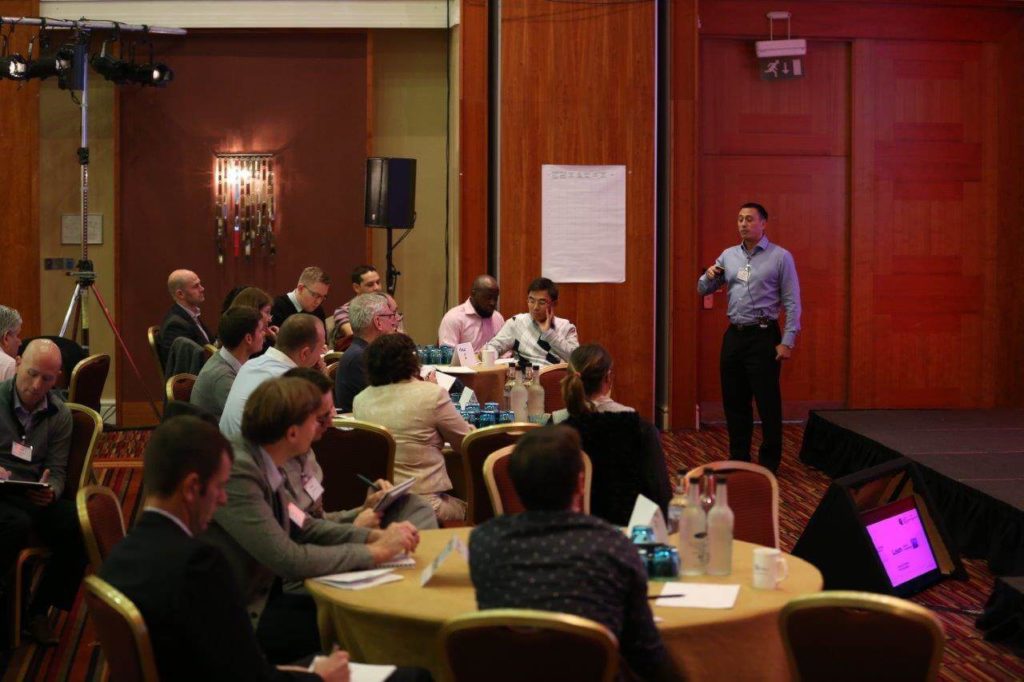
But often, it isn’t done well and in many cases may not fix the actual problem we set out to. In many organisations the problem solving process is rushed, focusing on finding the quickest, easiest solution rather than the one that is the most value adding. Toyota, on the other hand, uses a systematic problem solving process which carefully frames the problem, finds true root cause and uses experiments to test countermeasures to ensure the problem is fixed once and for all. This is a fundamental building block of Toyota’s success and is practised by all employees at all levels.
Toyota’s 8 Step Problem Solving
In a practice-based workshop, Mark Davies, Senior Manager at Toyota Lean Management Centre UK, took us through the 8 step problem solving process :-
1 – Clarify the problem 2 – Breakdown the problem 3 – Set a target 4 – Analyse the root cause 5 – Develop countermeasures 6 – See countermeasures through 7 – Monitor the process and results 8 – Standardise successful processes
Toyota understands that stages 1 – 4 are key to ensuring the right problem is tackled and in the right way. Problems can get messy and convoluted so it’s often confusing to teams as to which specific aspect of a problem to focus on. Step 1 and 2 are important to stratify data, often using Pareto to breakdown the problem. Asking what, when, where and who helps to highlight the top issue to be tackled. It then becomes easier to set SMART targets for improvement. Stage 4 and the identification of root cause is, arguably, the most difficult and the most poorly executed. Here Mark took us through a detailed process to move from the prioritised problem to possible direct causes. The mistakes are to jump in and prescribe possible direct causes to the problems without going to Gemba to confirm the facts. Here direct cause – observed causes of the problem – and root cause – the actual end cause we are trying to identify – are often confused. And then the use of the ‘5 whys’ , a simple tool, which is so effective in drilling down the causality chain to the true root causes.
So going through a case study to practise these steps, how did we do? Well, we didn’t get everything right! And the point here is, if we, as Lean practitioners, aren’t able to problem solve in a systematic way, how can we expect to coach and lead others to do the same?
Back to basics methinks.
An Update: Problem Solving 2021
Bringing this post up to date, we’ve developed the Lean Learning Platform so you can hone your skills. We have a range of materials to help you become self reliant on your lean journey. The complementary Level 1 Practical Problem Solving materials aim to provide knowledge around the subject area.
- Construction
- Manufacturing
- Public Sector
- Retail & Hospitality
- Supply Chain
- Capability Development
- Lean Leadership
- Lean Principles
- Management System
- Process Improvement
- Product Development
- Tools & Techniques
- Transformation
- Demand Analysis
- Flow Costing
- Lean & Green
- lean certification
- Lean Digital
- lean learning
- Lean Summit
- Lean Thinking
- Lean Transformation Framework
- Managment Routines
- People Capability
- Problem Solving
- product development
- Purpose Process People
- Rapid Problem Solving
- Standardised Work
- Supply Chain Management
- Teach Poster
- Training Within Industry (TWI)
- UK Lean Summit
- Value Stream Analysis
- Value Stream Mapping (VSM)
- Value Streams
- Visual Management

- Kindle Store
- Kindle eBooks
- Business & Money
Promotions apply when you purchase
These promotions will be applied to this item:
Some promotions may be combined; others are not eligible to be combined with other offers. For details, please see the Terms & Conditions associated with these promotions.
Buy for others
Buying and sending ebooks to others.
- Select quantity
- Buy and send eBooks
- Recipients can read on any device
These ebooks can only be redeemed by recipients in the US. Redemption links and eBooks cannot be resold.

Download the free Kindle app and start reading Kindle books instantly on your smartphone, tablet, or computer - no Kindle device required .
Read instantly on your browser with Kindle for Web.
Using your mobile phone camera - scan the code below and download the Kindle app.

Image Unavailable

- To view this video download Flash Player
Toyota's 8-Steps to Problem Solving Kindle Edition
- Print length 70 pages
- Language English
- Sticky notes On Kindle Scribe
- Publication date May 6, 2020
- File size 2330 KB
- Page Flip Enabled
- Word Wise Enabled
- Enhanced typesetting Enabled
- See all details
Customers who bought this item also bought

Product details
- ASIN : B088B77XXV
- Publication date : May 6, 2020
- Language : English
- File size : 2330 KB
- Simultaneous device usage : Unlimited
- Text-to-Speech : Enabled
- Screen Reader : Supported
- Enhanced typesetting : Enabled
- X-Ray : Not Enabled
- Word Wise : Enabled
- Sticky notes : On Kindle Scribe
- Print length : 70 pages
- #1,114 in Business Decision-Making
- #1,371 in Two-Hour Business & Money Short Reads
- #1,857 in Business Decision Making
Customer reviews
Customer Reviews, including Product Star Ratings help customers to learn more about the product and decide whether it is the right product for them.
To calculate the overall star rating and percentage breakdown by star, we don’t use a simple average. Instead, our system considers things like how recent a review is and if the reviewer bought the item on Amazon. It also analyzed reviews to verify trustworthiness.
- Sort reviews by Top reviews Most recent Top reviews
Top reviews from the United States
There was a problem filtering reviews right now. please try again later..
Top reviews from other countries
Report an issue
- Amazon Newsletter
- About Amazon
- Accessibility
- Sustainability
- Press Center
- Investor Relations
- Amazon Devices
- Amazon Science
- Sell on Amazon
- Sell apps on Amazon
- Supply to Amazon
- Protect & Build Your Brand
- Become an Affiliate
- Become a Delivery Driver
- Start a Package Delivery Business
- Advertise Your Products
- Self-Publish with Us
- Become an Amazon Hub Partner
- › See More Ways to Make Money
- Amazon Visa
- Amazon Store Card
- Amazon Secured Card
- Amazon Business Card
- Shop with Points
- Credit Card Marketplace
- Reload Your Balance
- Amazon Currency Converter
- Your Account
- Your Orders
- Shipping Rates & Policies
- Amazon Prime
- Returns & Replacements
- Manage Your Content and Devices
- Recalls and Product Safety Alerts
- Conditions of Use
- Privacy Notice
- Consumer Health Data Privacy Disclosure
- Your Ads Privacy Choices

8 Steps to Problem Solving: Implement Continuous Improvement in Your Organization
The 8 Steps to Problem Solving Method was developed by Toyota Motor Corporation as a practical, structured, and simple way to handle any problem from the smallest issue to the most complex roadblock.
What is the 8 Step Problem Solving Method?
This problem-solving method helps teams identify and solve problems in a clear and structured way, ensuring that there is consistency within an organization.
This process is an expansion of the Plan, Do, Check, and Act (PDCA) cycle. Steps one through five are part of the planning process, step six is the doing process, step seven is the checking process, and step eight is the acting part of the cycle.
Following this method ensures that your problem-solving technique can be repeated in a sustainable way with the least amount of impact on your customers.
What are the benefits of the 8 Step Method?
There are a few key benefits to using this method to solve your problems:
You get to the root cause of the issue, ensuring the problem is not repeated in the future.
You can better identify and prevent any weak points in your process.
Long-term, effective solutions are generated.
Problems will be reduced over time, increasing your bottom line.
What are the 8 Steps in this Methodology?
Clarify Problem
Break Down Problem
Root Cause Analysis
Develop Countermeasures
See Countermeasures Through
Monitor Results and Processes
Standardize Successful Process
A Detailed look at the 8 Steps to Problem Solving Templates

Step 1: Clarify The Problem
In this step, you need to identify and clarify the problem. Determine why it is a problem, what should be happening instead, and how it fits into the business as a whole.
The Stormboard Template for this step is divided into four sections: Clarify Ideal Situation, Clarify Current Situation, Visualize Gap Between Current and Ideal Situations, and Set Ultimate Goal.
Step 2: Break Down The Problem
For this next step, you need to start getting more detailed and specific. Break down the problem into manageable pieces, go see the problem in the process, analyze the issues, and start thinking about priorities.
The Stormboard Template for this step is divided into three sections: Get Your Boots On and Go See, Create a Process Flow, and Identify Point of Occurrence.
Step 3: Set Your Target
This step is where you set clear target dates to resolve the problem. Determine what is needed to reach the target and how long it will take.
The Stormboard Template for this step is divided into three sections: Measurability, Target Point of Occurrence, and What, How Much, and When.
Step 4: Perform a Root Cause Analysis
In this step, you really dig into the factors that are causing the problem. Consider and address all of the causes of the issue — there will usually be more than one.
The Stormboard Template for this step is divided into four sections: Create a Decision-Making Tree, Analyse and Discard Ideas, Ask Why, and Conduct “Why Analysis”.
Step 5: Develop Countermeasures
Use this step to brainstorm countermeasures that will help you remove the root causes of your problem. Come up with as many as possible, and then narrow the criteria matrix and create an implementation plan
The Stormboard Template for this step is divided into three sections: List Root Cause, List Countermeasures, and Chart and Rate Countermeasures.
Step 6: See Countermeasures Through
In this step, you will implement your countermeasures using a clear plan and share the progress of each countermeasure that you implement with your team.
The Stormboard Template for this step is divided into three sections: Implement Countermeasures, Share progress, and Next Steps.
Step 7: Monitor Results and Processes
Use this step to determine if your countermeasures were successful or if they need to be adjusted and reimplemented.
The Stormboard Template for this step is divided into three sections: Evaluate Results, Report, and Lessons Learned.
Step 8: Standardize The Successful Process
In this step, you will integrate your successful countermeasure into your process, share your results with your team, reflect on what you have learned, and make sure there are no unaddressed issues.
The Stormboard Template for this step is divided into three sections: Standardize, Share, and Start a new Kaizen.
See the template →
Are you interested in trying out Stormboard’s 8 Steps to Problem Solving Templates with your team? Sign up for a FREE trial now !
Keep reading.

Explore the hidden costs of excessive meetings in Agile environments and learn how to streamline your team's workflow for optimal productivity. Discover practical solutions to common complaints and transform your meetings into valuable assets that drive efficiency and collaboration.

Discover the latest advancements in StormAI, the industry's first augmented intelligence collaborator, with exciting updates that enhance its capabilities. Learn about the innovative features and improvements that make StormAI 2.0 a groundbreaking technology for collaborative work.

Discover the contrasting views within the Agile community regarding spilled stories (or spillover) in sprint cycles and delve into strategies adopted by different teams. Gain insights into the pros and cons of each approach to better inform your Agile methodology.

Uncover the pivotal role collaborative platforms play in facilitating a seamless transition towards sustainable energy solutions. From project management to real-time communication, explore how these tools are reshaping the landscape for utility companies amidst the push for renewable energy adoption.

Discover how groupthink poses a significant threat to innovation within agile teams, hindering the emergence of new ideas and impeding progress throughout the scrum cycle. Explore strategies for agile team management to mitigate the impact of groupthink and foster a culture of creativity and innovation.

Discover how technology enables cohesive collaboration for remote web development teams, with 4 out of 5 developers working remotely. Explore the top collaboration tools empowering seamless workflows and website building, regardless of location.

In a fast-paced business world marked by evolving customer needs and technological advancements, staying ahead demands adaptability. Discover how fostering an agile workplace culture can empower your team to innovate, collaborate, and swiftly respond to change, driving efficiency and securing a competitive edge.

Learn how DevOps is revolutionizing development and operations workflows, enhancing product delivery speed and cost-efficiency. Explore the critical role of continuous security auditing in DevOps to mitigate vulnerabilities and safeguard against threats.

Project management challenges are inevitable. Here are some common problems and how you can stay ahead of them in 2024.

Explore the transformative landscape of 2023 as Stormboard, riding the generative AI wave, celebrates its most significant year yet. Uncover how Stormboard's core product enhancements and advanced workflow integrations respond to the evolving needs of modern businesses, empowering enterprises to reimagine their technology strategy for a dynamic future.

Unlock innovation and embrace diversity in team brainstorming! Learn strategies to navigate cultural differences and create an inclusive environment for effective ideation while overcoming boundaries and enhancing diversity in collaboration sessions.
How Collaborative Leadership is Changing Business
Scared of the blank page add sample content to your template to get to work faster.
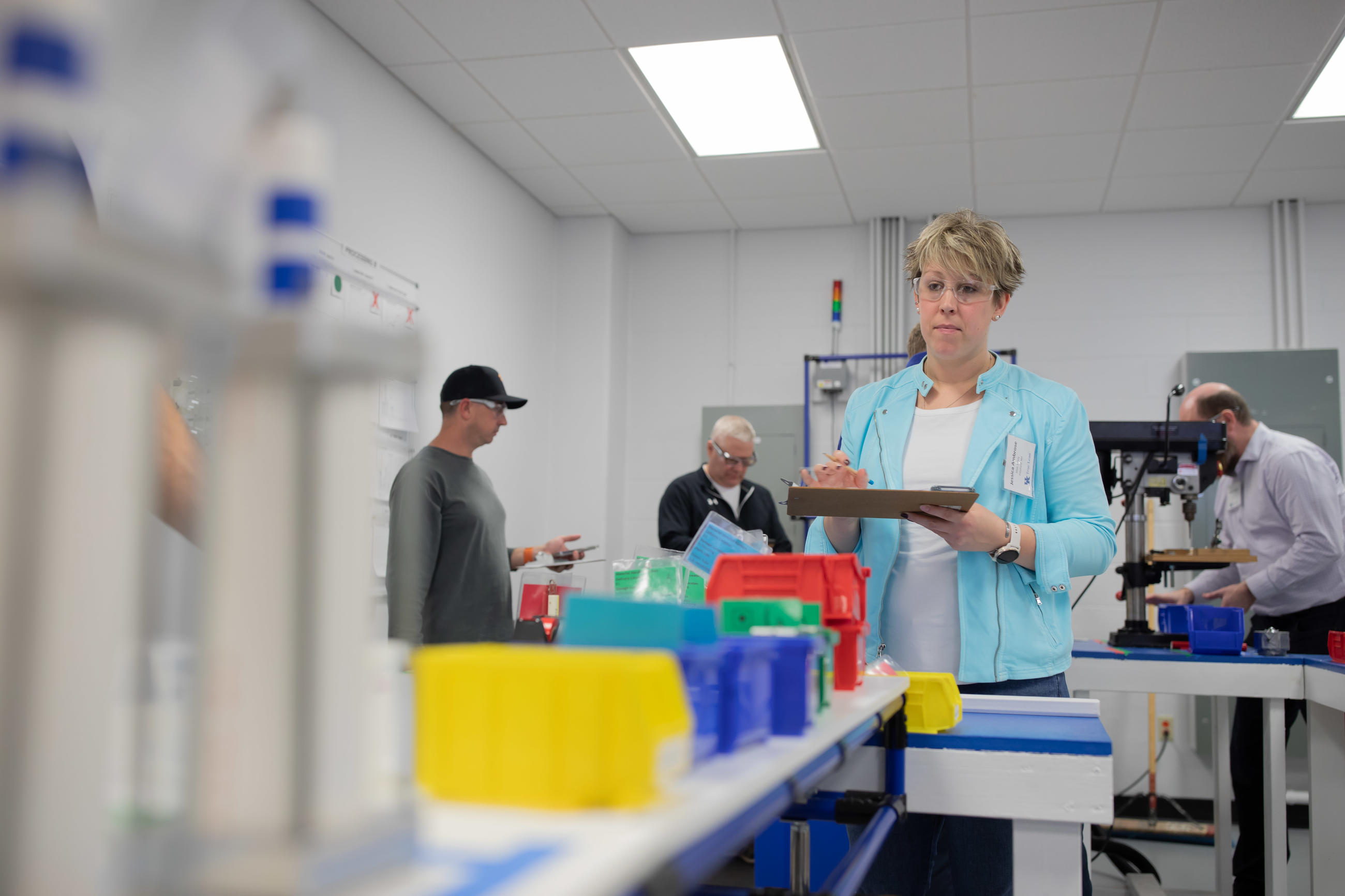
Eight-Step Problem Solving
Systematic problem-solving is a core element of a True Lean™ organization. This course teaches the 8-Step problem-solving method used within Toyota at all levels and functions to practice effective continuous learning and improvement. We use a learn-by-doing format as teams will work through real problems selected within their organization and be coached through the process to achieve tangible results while developing their problem solving and critical thinking skills. Properly implemented, this systematic problem-solving approach delete: also becomes integral to the organization’s behavior habits at all levels that support the True Lean™ culture.
Designed for
Organizational Professionals at all levels and Departments
The knowledge you will gain
- Guiding Principles behind the Eight-Step methodology
- Understanding the universal application for all functions and all levels in your organization.
- The role and use of “A3 documents” separate from the problem-solving itself.
- Utilizing Eight-Step to return to a proven performance level OR advance the performance level. Both deliver tangible results.
- Application of temporary measures and long-term countermeasures to prevent recurrence and achieve sustainable improvements.
- How it engages all to “own their workplace” and drive positive moral and personal development.
Interactive with Gap Analysis “Takeaway”
- This interactive session includes dynamic learning with open discussions
- Participants will learn the 8-step process and how to write an A3 summary using real problems from their workplace.
- Participants will be able to describe the philosophy, principles, and practice of the methodology and determine their needs-based next steps
Coaching Available
- Executive and Operational Coaching for Individuals based on the organizational level
- Ongoing needs-based Coaching on Eight-Step Problem Solving
Registration Information
Location: Virtual Fee: $2500 per participant
Register Today
For information on fees for a dedicated session, contact [email protected] .
- Learn center
- Project management
How to use Toyota’s legendary A3 problem-solving technique
Georgina Guthrie
February 21, 2020
If you came home one day and found your kitchen taps on full-blast and your house full of water, what’s the first thing you’d do? Grab a bucket and start scooping — or turn off the tap?
When it comes to problem-solving, many of us take a rushed, reactionary approach rather than fixing the issue at the source. So in other words, we see the water, panic, and start scooping. If this sounds like something you’ve done recently, then don’t feel too bad: when the pressure’s high, we often jump towards the quickest fix, as opposed to the most effective one.
This is where the A3 technique comes in. It’s a problem-solving approach designed to efficiently address the root cause of issues.
What is the A3 technique?
The A3 technique is a structured way to solve problems. It’s part of the Lean methodology , developed by Toyota back in the mid-’40s. This doesn’t mean you need to implement a Lean way of working to take advantage of this process — it can work as a standalone exercise.
Granted, A3 isn’t an inspiring name, but the story of its origins is actually pretty interesting. Rumour has it that Taiichi Ohno, inventor of the Toyota Production System, refused to read past the first page of any report. In response, his team created A3 address and summarize problem-solving on one side of A3-sized paper. The A3 technique played a huge part in Toyota’s success and all kinds of industries have since adopted it. Here’s how to get started.
How to solve a problem with A3
The first thing to remember is this: A3 is collaborative and relies on good communication. It’s not something you should do by yourself.
There are three main roles involved:
- Owner (that’s you or someone under your charge)
As you’ve probably guessed, these aren’t roles that already exist in your company; you must create them for the purpose of this process. Here’s what they mean.
The owner is responsible for leading the exercise. They are the lynchpin between the two other roles, fostering good communication and keeping documents up to date. It’s tempting to think of the owner as the head of this trio, but that’s not true: everyone is equal here.
The mentor is someone with solid problem-solving experience. It’s their job to coach the owner and steer them towards finding a solution. It’s not their job to find the answers themselves.
And finally, there are the responders . This is someone (or a group of people) who have a vested interest in the outcome of the A3 project. Responders might include the client, stakeholders, or managers. A potential problem here is gaining access to them: if you work somewhere with a strict hierarchy — and you’re somewhere near the bottom of that structure — you may face challenges. There’s no easy way around this. Essentially, you need your organization to support this way of working and make it easy for you to access those at the top if needed.
How to create an A3 report
True to its origins, the A3 report is a one-page document. It typically contains 5-7 sections that systematically lead you towards a solution. These are the most commonly used steps, but feel free to modify them.
- Background: Explain your project in a few sentences, including its context.
- Problem statement: Explain the current problem. You can use process mapping to see the different tasks that surround the issue. This isn’t essential, but it will make it easier for you to locate the root cause.
- Goals: Define your desired outcome, and include metrics for measuring success. You won’t know everything until you reach the end, so you may find you need to come back and refine stages 1-3.
- Root cause analysis: This is a big stage of the process. You need to work out what you think the root problem is. You can use different methods to help you here, including 5 whys or a fault tree analysis .
- Countermeasures: Once you’ve worked out your root cause, you can start proposing solutions.
- Implementation: Work out how you’ll implement these solutions, including an action list with clearly defined roles and responsibilities. Project management software is a useful tool here because it can help everyone on the team track each other’s progress in real-time.
- Follow-up: Using your metrics for success, decide whether the problem was solved. Report your results back to the team/organization. In the spirit of Lean (continuous improvement), you should go back and modify your plan if the results weren’t as expected. And if they were, you should make this process the new standard.
Final thoughts
A3 is an efficient, methodical way to solve problems at their source. When issues rear their head, rising stress can lead people to panic. Having a clearly designed system in place to guide you towards a solution minimizes the chances of people settling for a ‘quick fix’ or failing to act altogether.
Beyond being a guiding light in times of pressure, A3 is a great team-building exercise because it encourages individuals to work together towards a common goal — across all areas of the organization. Combine this with collaborative tools designed to help teams track progress and work together more effectively, and you’ll be unstoppable.

Solve problems like a pro with Root Cause Corrective Action

Lean to Six Sigma: process improvement methodologies explained
Subscribe to our newsletter.
Learn with Nulab to bring your best ideas to life
How Toyota Turns Workers Into Problem Solvers
Sarah Jane Johnston: Why study Toyota? With all the books and articles on Toyota, lean manufacturing, just-in-time, kanban systems, quality systems, etc. that came out in the 1980s and 90s, hasn't the topic been exhausted?
Steven Spear: Well, this has been a much-researched area. When Kent Bowen and I first did a literature search, we found nearly 3,000 articles and books had been published on some of the topics you just mentioned.
However, there was an apparent discrepancy. There had been this wide, long-standing recognition of Toyota as the premier automobile manufacturer in terms of the unmatched combination of high quality, low cost, short lead-time and flexible production. And Toyota's operating system—the Toyota Production System—had been widely credited for Toyota's sustained leadership in manufacturing performance. Furthermore, Toyota had been remarkably open in letting outsiders study its operations. The American Big Three and many other auto companies had done major benchmarking studies, and they and other companies had tried to implement their own forms of the Toyota Production System. There is the Ford Production System, the Chrysler Operating System, and General Motors went so far as to establish a joint venture with Toyota called NUMMI, approximately fifteen years ago.
However, despite Toyota's openness and the genuinely honest efforts by other companies over many years to emulate Toyota, no one had yet matched Toyota in terms of having simultaneously high-quality, low-cost, short lead-time, flexible production over time and broadly based across the system.
It was from observations such as these that Kent and I started to form the impression that despite all the attention that had already been paid to Toyota, something critical was being missed. Therefore, we approached people at Toyota to ask what they did that others might have missed.
Q: What did they say?
A: To paraphrase one of our contacts, he said, "It's not that we don't want to tell you what TPS is, it's that we can't. We don't have adequate words for it. But, we can show you what TPS is."
Over about a four-year period, they showed us how work was actually done in practice in dozens of plants. Kent and I went to Toyota plants and those of suppliers here in the U.S. and in Japan and directly watched literally hundreds of people in a wide variety of roles, functional specialties, and hierarchical levels. I personally was in the field for at least 180 working days during that time and even spent one week at a non-Toyota plant doing assembly work and spent another five months as part of a Toyota team that was trying to teach TPS at a first-tier supplier in Kentucky.
Q: What did you discover?
A: We concluded that Toyota has come up with a powerful, broadly applicable answer to a fundamental managerial problem. The products we consume and the services we use are typically not the result of a single person's effort. Rather, they come to us through the collective effort of many people each doing a small part of the larger whole. To a certain extent, this is because of the advantages of specialization that Adam Smith identified in pin manufacturing as long ago as 1776 in The Wealth of Nations . However, it goes beyond the economies of scale that accrue to the specialist, such as skill and equipment focus, setup minimization, etc.
The products and services characteristic of our modern economy are far too complex for any one person to understand how they work. It is cognitively overwhelming. Therefore, organizations must have some mechanism for decomposing the whole system into sub-system and component parts, each "cognitively" small or simple enough for individual people to do meaningful work. However, decomposing the complex whole into simpler parts is only part of the challenge. The decomposition must occur in concert with complimentary mechanisms that reintegrate the parts into a meaningful, harmonious whole.
This common yet nevertheless challenging problem is obviously evident when we talk about the design of complex technical devices. Automobiles have tens of thousands of mechanical and electronic parts. Software has millions and millions of lines of code. Each system can require scores if not hundreds of person-work-years to be designed. No one person can be responsible for the design of a whole system. No one is either smart enough or long-lived enough to do the design work single handedly.
Furthermore, we observe that technical systems are tested repeatedly in prototype forms before being released. Why? Because designers know that no matter how good their initial efforts, they will miss the mark on the first try. There will be something about the design of the overall system structure or architecture, the interfaces that connect components, or the individual components themselves that need redesign. In other words, to some extent the first try will be wrong, and the organization designing a complex system needs to design, test, and improve the system in a way that allows iterative congruence to an acceptable outcome.
The same set of conditions that affect groups of people engaged in collaborative product design affect groups of people engaged in the collaborative production and delivery of goods and services. As with complex technical systems, there would be cognitive overload for one person to design, test-in-use, and improve the work systems of factories, hotels, hospitals, or agencies as reflected in (a) the structure of who gets what good, service, or information from whom, (b) the coordinative connections among people so that they can express reliably what they need to do their work and learn what others need from them, and (c) the individual work activities that create intermediate products, services, and information. In essence then, the people who work in an organization that produces something are simultaneously engaged in collaborative production and delivery and are also engaged in a collaborative process of self-reflective design, "prototype testing," and improvement of their own work systems amidst changes in market needs, products, technical processes, and so forth.
It is our conclusion that Toyota has developed a set of principles, Rules-in-Use we've called them, that allow organizations to engage in this (self-reflective) design, testing, and improvement so that (nearly) everyone can contribute at or near his or her potential, and when the parts come together the whole is much, much greater than the sum of the parts.
Q: What are these rules?
A: We've seen that consistently—across functional roles, products, processes (assembly, equipment maintenance and repair, materials logistics, training, system redesign, administration, etc.), and hierarchical levels (from shop floor to plant manager and above) that in TPS managed organizations the design of nearly all work activities, connections among people, and pathways of connected activities over which products, services, and information take form are specified-in-their-design, tested-with-their-every-use, and improved close in time, place, and person to the occurrence of every problem .
Q: That sounds pretty rigorous.
A: It is, but consider what the Toyota people are attempting to accomplish. They are saying before you (or you all) do work, make clear what you expect to happen (by specifying the design), each time you do work, see that what you expected has actually occurred (by testing with each use), and when there is a difference between what had actually happened and what was predicted, solve problems while the information is still fresh.
Q: That reminds me of what my high school lab science teacher required.
A: Exactly! This is a system designed for broad based, frequent, rapid, low-cost learning. The "Rules" imply a belief that we may not get the right solution (to work system design) on the first try, but that if we design everything we do as a bona fide experiment, we can more rapidly converge, iteratively, and at lower cost, on the right answer, and, in the process, learn a heck of lot more about the system we are operating.
Q: You say in your article that the Toyota system involves a rigorous and methodical problem-solving approach that is made part of everyone's work and is done under the guidance of a teacher. How difficult would it be for companies to develop their own program based on the Toyota model?
A: Your question cuts right to a critical issue. We discussed earlier the basic problem that for complex systems, responsibility for design, testing, and improvement must be distributed broadly. We've observed that Toyota, its best suppliers, and other companies that have learned well from Toyota can confidently distribute a tremendous amount of responsibility to the people who actually do the work, from the most senior, expeirenced member of the organization to the most junior. This is accomplished because of the tremendous emphasis on teaching everyone how to be a skillful problem solver.
Q: How do they do this?
A: They do this by teaching people to solve problems by solving problems. For instance, in our paper we describe a team at a Toyota supplier, Aisin. The team members, when they were first hired, were inexperienced with at best an average high school education. In the first phase of their employment, the hurdle was merely learning how to do the routine work for which they were responsible. Soon thereafter though, they learned how to immediately identify problems that occurred as they did their work. Then they learned how to do sophisticated root-cause analysis to find the underlying conditions that created the symptoms that they had experienced. Then they regularly practiced developing counter-measures—changes in work, tool, product, or process design—that would remove the underlying root causes.
Q: Sounds impressive.
A: Yes, but frustrating. They complained that when they started, they were "blissful in their ignorance." But after this sustained development, they could now see problems, root down to their probable cause, design solutions, but the team members couldn't actually implement these solutions. Therefore, as a final round, the team members received training in various technical crafts—one became a licensed electrician, another a machinist, another learned some carpentry skills.
Q: Was this unique?
A: Absolutely not. We saw the similar approach repeated elsewhere. At Taiheiyo, another supplier, team members made sophisticated improvements in robotic welding equipment that reduced cost, increased quality, and won recognition with an award from the Ministry of Environment. At NHK (Nippon Spring) another team conducted a series of experiments that increased quality, productivity, and efficiency in a seat production line.
Q: What is the role of the manager in this process?
A: Your question about the role of the manager gets right to the heart of the difficulty of managing this way. For many people, it requires a profound shift in mind-set in terms of how the manager envisions his or her role. For the team at Aisin to become so skilled as problem solvers, they had to be led through their training by a capable team leader and group leader. The team leader and group leader were capable of teaching these skills in a directed, learn-by-doing fashion, because they too were consistently trained in a similar fashion by their immediate senior. We found that in the best TPS-managed plants, there was a pathway of learning and teaching that cascaded from the most senior levels to the most junior. In effect, the needs of people directly touching the work determined the assistance, problem solving, and training activities of those more senior. This is a sharp contrast, in fact a near inversion, in terms of who works for whom when compared with the more traditional, centralized command and control system characterized by a downward diffusion of work orders and an upward reporting of work status.
Q: And if you are hiring a manager to help run this system, what are the attributes of the ideal candidate?
A: We observed that the best managers in these TPS managed organizations, and the managers in organizations that seem to adopt the Rules-in-Use approach most rapidly are humble but also self-confident enough to be great learners and terrific teachers. Furthermore, they are willing to subscribe to a consistent set of values.
Q: How do you mean?
A: Again, it is what is implied in the guideline of specifying every design, testing with every use, and improving close in time, place, and person to the occurrence of every problem. If we do this consistently, we are saying through our action that when people come to work, they are entitled to expect that they will succeed in doing something of value for another person. If they don't succeed, they are entitled to know immediately that they have not. And when they have not succeeded, they have the right to expect that they will be involved in creating a solution that makes success more likely on the next try. People who cannot subscribe to these ideas—neither in their words nor in their actions—are not likely to manage effectively in this system.
Q: That sounds somewhat high-minded and esoteric.
A: I agree with you that it strikes the ear as sounding high principled but perhaps not practical. However, I'm fundamentally an empiricist, so I have to go back to what we have observed. In organizations in which managers really live by these Rules, either in the Toyota system or at sites that have successfully transformed themselves, there is a palpable, positive difference in the attitude of people that is coupled with exceptional performance along critical business measures such as quality, cost, safety, and cycle time.
Q: Have any other research projects evolved from your findings?
A: We titled the results of our initial research "Decoding the DNA of the Toyota Production System." Kent and I are reasonably confident that the Rules-in-Use about which we have written are a successful decoding. Now, we are trying to "replicate the DNA" at a variety of sites. We want to know where and when these Rules create great value, and where they do, how they can be implemented most effectively.
Since we are empiricists, we are conducting experiments through our field research. We are part of a fairly ambitious effort at Alcoa to develop and deploy the Alcoa Business System, ABS. This is a fusion of Alcoa's long standing value system, which has helped make Alcoa the safest employer in the country, with the Rules in Use. That effort has been going on for a number of years, first with the enthusiastic support of Alcoa's former CEO, Paul O'Neill, now Secretary of the Treasury (not your typical retirement, eh?) and now with the backing of Alain Belda, the company's current head. There have been some really inspirational early results in places as disparate as Hernando, Mississippi and Poces de Caldas, Brazil and with processes as disparate as smelting, extrusion, die design, and finance.
We also started creating pilot sites in the health care industry. We started our work with a "learning unit" at Deaconess-Glover Hospital in Needham, not far from campus. We've got a series of case studies that captures some of the learnings from that effort. More recently, we've established pilot sites at Presbyterian and South Side Hospitals, both part of the University of Pittsburgh Medical Center. This work is part of a larger, comprehensive effort being made under the auspices of the Pittsburgh Regional Healthcare Initiative, with broad community support, with cooperation from the Centers for Disease Control, and with backing from the Robert Wood Johnson Foundation.
Also, we've been testing these ideas with our students: Kent in the first year Technology and Operations Management class for which he is course head, me in a second year elective called Running and Growing the Small Company, and both of us in an Executive Education course in which we participate called Building Competitive Advantage Through Operations.
- 15 May 2024
- Research & Ideas
A Major Roadblock for Autonomous Cars: Motorists Believe They Drive Better
- 09 May 2024
Called Back to the Office? How You Benefit from Ideas You Didn't Know You Were Missing
- 15 Aug 2023
- Cold Call Podcast
Ryan Serhant: How to Manage Your Time for Happiness
- 06 May 2024
The Critical Minutes After a Virtual Meeting That Can Build Up or Tear Down Teams
- 28 Feb 2022
How Racial Bias Taints Customer Service: Evidence from 6,000 Hotels
- Infrastructure
- Organizational Design
- Competency and Skills
- Manufacturing
- Transportation
Sign up for our weekly newsletter

- Our Services
Practical Problem Solving
Many organisations often struggle with effective problem solving and find that the best they can achieve is to merely contain the existing problems by introducing more waste into the organisation. For example an unreliable machine will be managed by adding in more stock to protect supply to the customer or through the acquisition of a second machine to ensure throughput. Real problem solving countermeasures the root cause of an issue preventing it from reoccurring and in doing so creates stability with the least amount of waste.
Toyota A3 Problem Solving is not a skill reserved for engineers and managers, if you truly desire to harness the creativity and innovation of your employees then it should be seen as a fundamental skill possessed by everyone.
Key Study Areas
- Introduction to Toyota A3 8 step problem solving approach
- Differences between Toyota approach and other such as six sigma
- Define the real problem
- Use and present data to clarify the point of cause of the problem
- Study the problem to ensure complete understanding
- Select countermeasures and evaluate effectiveness
- Monitor the results & gain greater benefits through effective sharing
All levels of an organisation.
Problem Solving Course Information
This course can be delivered at Deeside or at a client's site. Undertaking the course at your own facility will allow for a real problem to be tackled.
This course is available in two versions:
One day version which will teach you the theory and challange you to apply your knowledge on a case study.
Two day version where, in addition to the above, we will support you to apply the principles to an area within your own organisation.
Customer Comments
"As a six sigma green belt I was sceptical about how this would compare. I was amazed at what Toyota are achieving with this approach." - 13/11/19
We've detected unusual activity from your computer network
To continue, please click the box below to let us know you're not a robot.
Why did this happen?
Please make sure your browser supports JavaScript and cookies and that you are not blocking them from loading. For more information you can review our Terms of Service and Cookie Policy .
For inquiries related to this message please contact our support team and provide the reference ID below.

IMAGES
VIDEO
COMMENTS
The Toyota Way To Problem Solving. The art of problem solving is constantly trying to evolve and be re-branded by folks in various industries. While the new way might very well be an effective method in certain applications. A tried and true way of identifying and solving problems is the eight steps to practical problem solving developed by ...
https://gembaacademy.com | The Gemba Academy Practical Problem Solving course explains the exact 8 step problem solving process used by these lean exemplars ...
Toyota's 8 steps for problem-solving act as the lens that allows you to view different aspects of your operation from a new perspective. Consider these eight steps as you start on the path to continuous improvement. 1. Clarify the problem. The first step in solving a problem is realizing that one exists. You can define a problem by asking ...
https://GembaAcademy.com | Learn the 8 steps Practical Problem Solving methodology, lean thinking exemplars such as Toyota use to attack problems. ️ For mor...
1 - Clarify the problem. 2 - Breakdown the problem. 3 - Set a target. 4 - Analyse the root cause. 5 - Develop countermeasures. 6 - See countermeasures through. 7 - Monitor the process and results. 8 - Standardise successful processes. Toyota understands that stages 1 - 4 are key to ensuring the right problem is tackled and in ...
Paperback. $28.00 5 Used from $6.15 9 New from $28.00 1 Collectible from $29.99. Toyota's 8 Steps to Problem-Solving is a how to book. The content explains Toyota's methodology for problem-solving that has been proven as a very effective approach.The book not only lays out Toyota's 8 steps to problem-solving, it also describes specific ...
Toyota's 8 Step "Practical Problem Solving" Process Some of the best problem solving methods are the simplest and one of those that continues to stand the test of time is Toyota's 8 step method. This method also goes by the name of "Practical Problem Solving" or "PPS" for short. In the diagram below
the 8 step process to effective problem solving •Apply the process to your own work situation during class discussion •Experience how the A-3 tool communicates the ... step Complete Root Cause Toyota strength-standardize 8 Step Problem Solving Process 3 . Lean Systems Program
A Lean Frontiers webinar presented by Steve Ansuini.
Toyota's 8 Step Practical Problem Solving, Revisited. By Jon Miller Updated on March 4th, 2021. The practical problem solving steps…. It is too early to talk about solutions. It is still too early to talk about solutions. It is still too early to talk about solutions. It is still too early to talk about solutions.
Paperback. $29.00 6 Used from $4.97 7 New from $28.63 1 Collectible from $29.99. Toyota's 8 Steps to Problem-Solving is a how to book. The content explains Toyota's methodology for problem-solving that has been proven as a very effective approach.The book not only lays out Toyota's 8 steps to problem-solving, it also describes specific ...
The 8-Step Practical Problem Solving Process: The eight steps: Clarifying the problem and describing the current situation. Breaking down a big problem into smaller, more specific problems and studying the process. Setting a challenging yet achievable target. Analyzing the root cause.
Step 2: Break Down The Problem. For this next step, you need to start getting more detailed and specific. Break down the problem into manageable pieces, go see the problem in the process, analyze the issues, and start thinking about priorities. The Stormboard Template for this step is divided into three sections: Get Your Boots On and Go See ...
Systematic problem-solving is a core element of a True Lean™ organization. This course teaches the 8-Step problem-solving method used within Toyota at all levels and functions to practice effective continuous learning and improvement. We use a learn-by-doing format as teams will work through real problems selected within their organization ...
The A3 technique is a structured way to solve problems. It's part of the Lean methodology, developed by Toyota back in the mid-'40s. This doesn't mean you need to implement a Lean way of working to take advantage of this process — it can work as a standalone exercise. Granted, A3 isn't an inspiring name, but the story of its origins ...
The document outlines Toyota's 8 steps to practical problem solving which include: 1) clarifying the problem, 2) breaking down the problem, 3) setting a target, 4) analyzing the root cause, 5) developing countermeasures, 6) implementing countermeasures, 7) monitoring results and the process, and 8) standardizing and sharing success. The 8 steps ...
HBS professor Steven Spear says it's all about problem solving. When HBS professor Steven Spear recently released an abstract on problem solving at Toyota, HBS Working Knowledge staffer Sarah Jane Johnston e-mailed off some questions. Spear not only answered the questions, but also asked some of his own—and answered those as well.
#ProblemSolving #LeanVlogWhat is Problem Solving is explained in this video by Toyota's approach.Here the transcript of the video.Toyota's 8 Step Problem Sol...
Toyota's 8 Steps to Problem-Solving is a how to book. The content explains Toyota's methodology for problem-solving that has been proven as a very effective approach.The book not only lays out Toyota's 8 steps to problem-solving, it also describes specific tools and how to utilize them in a...
Problem-solving creativity combines creative ideas, such as exploring knowledge, defining problems, and comparing ideas to identify the most creative ones (van Hooijdonk et al., 2020). Several ...
3.75. 4 ratings1 review. Toyota's 8 Steps to Problem-Solving is a how to book. The content explains Toyota's methodology for problem-solving that has been proven as a very effective approach.The book not only lays out Toyota's 8 steps to problem-solving, it also describes specific tools and how to utilize them in a problem-solving ...
Toyota 8 step problem solving training will help all problem solvers to approach projects with a new found confidence. The 8 step process is highly interactive and collaborative in nature. The objective is to enable the problem solver to 'find a problem, solve a problem and prevent a problem from coming ...
Toyota A3 Problem Solving is not a skill reserved for engineers and managers, if you truly desire to harness the creativity and innovation of your employees then it should be seen as a fundamental skill possessed by everyone. Key Study Areas. Introduction to Toyota A3 8 step problem solving approach
4:14. Toyota Motor Corp. gave a tepid outlook after recent scandals forced it to cut production, overshadowing a surge in hybrid sales that boosted profit to a record last year. The company ...